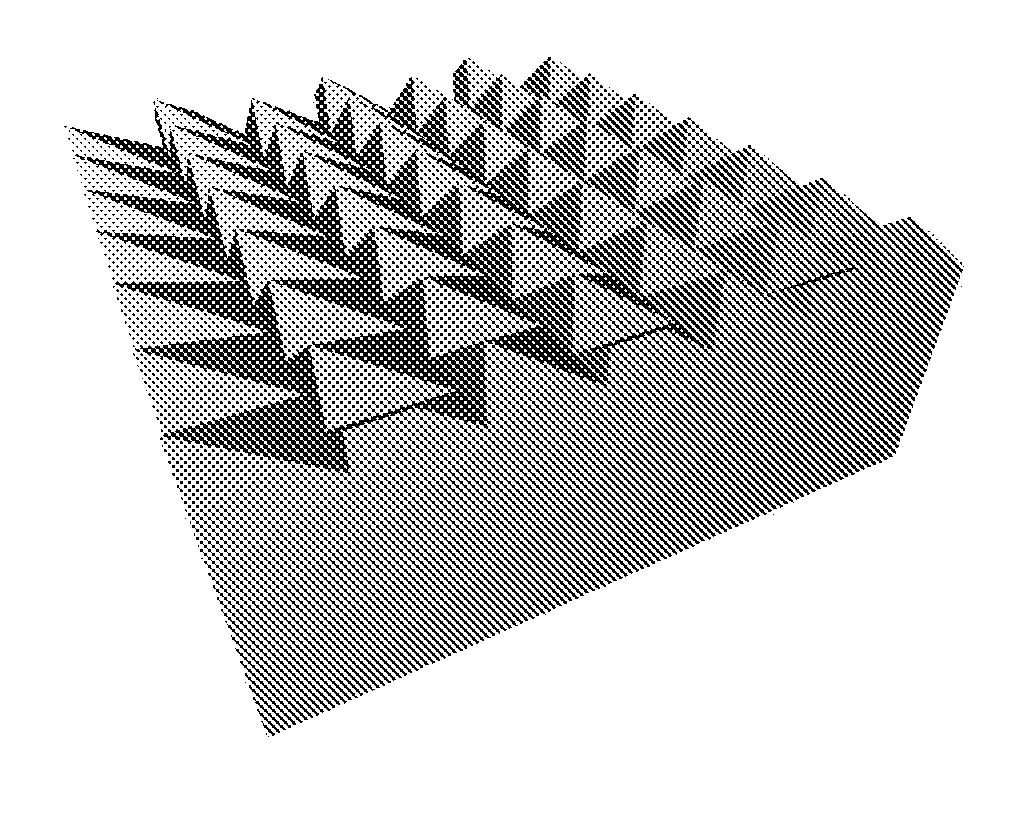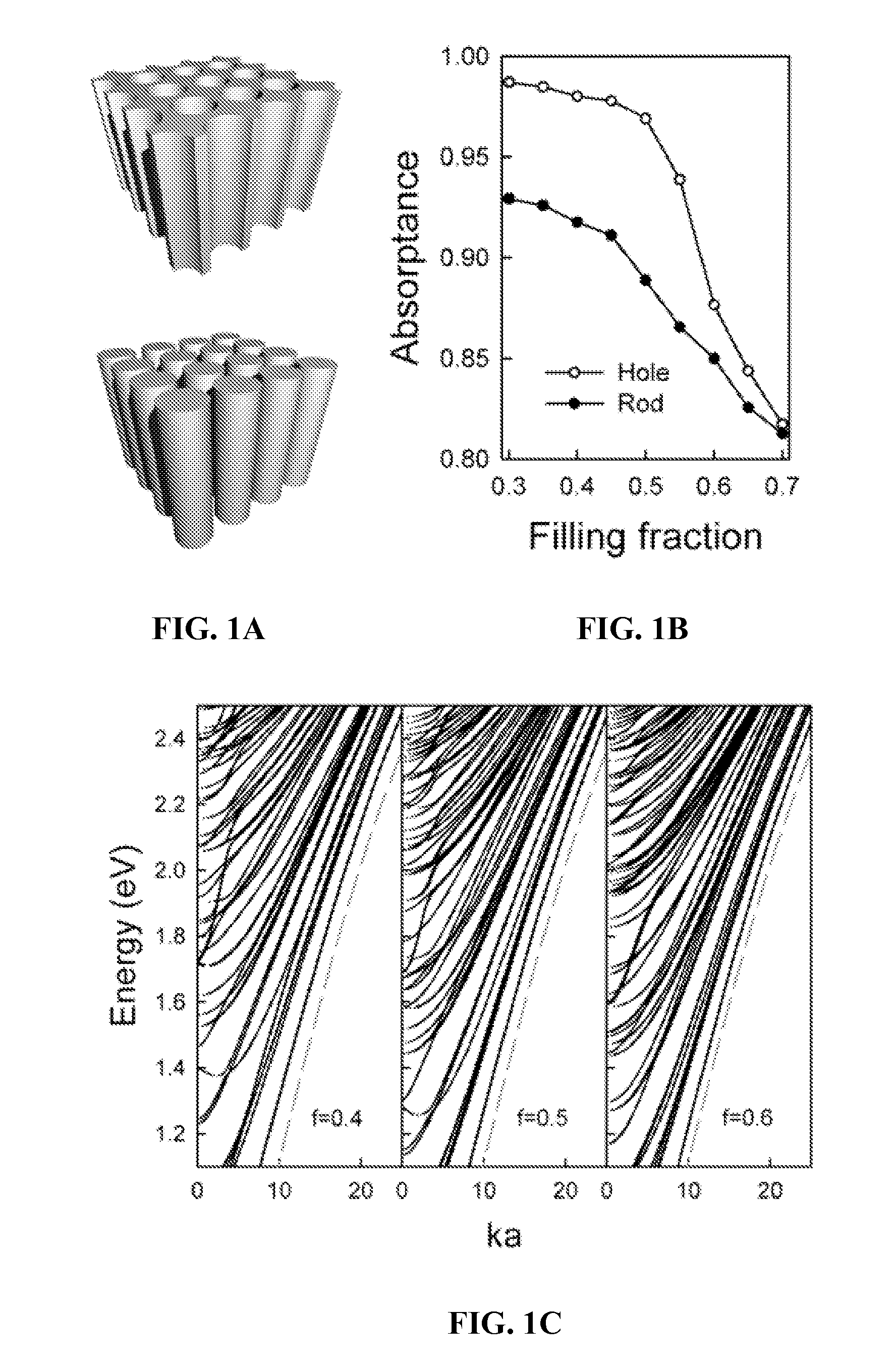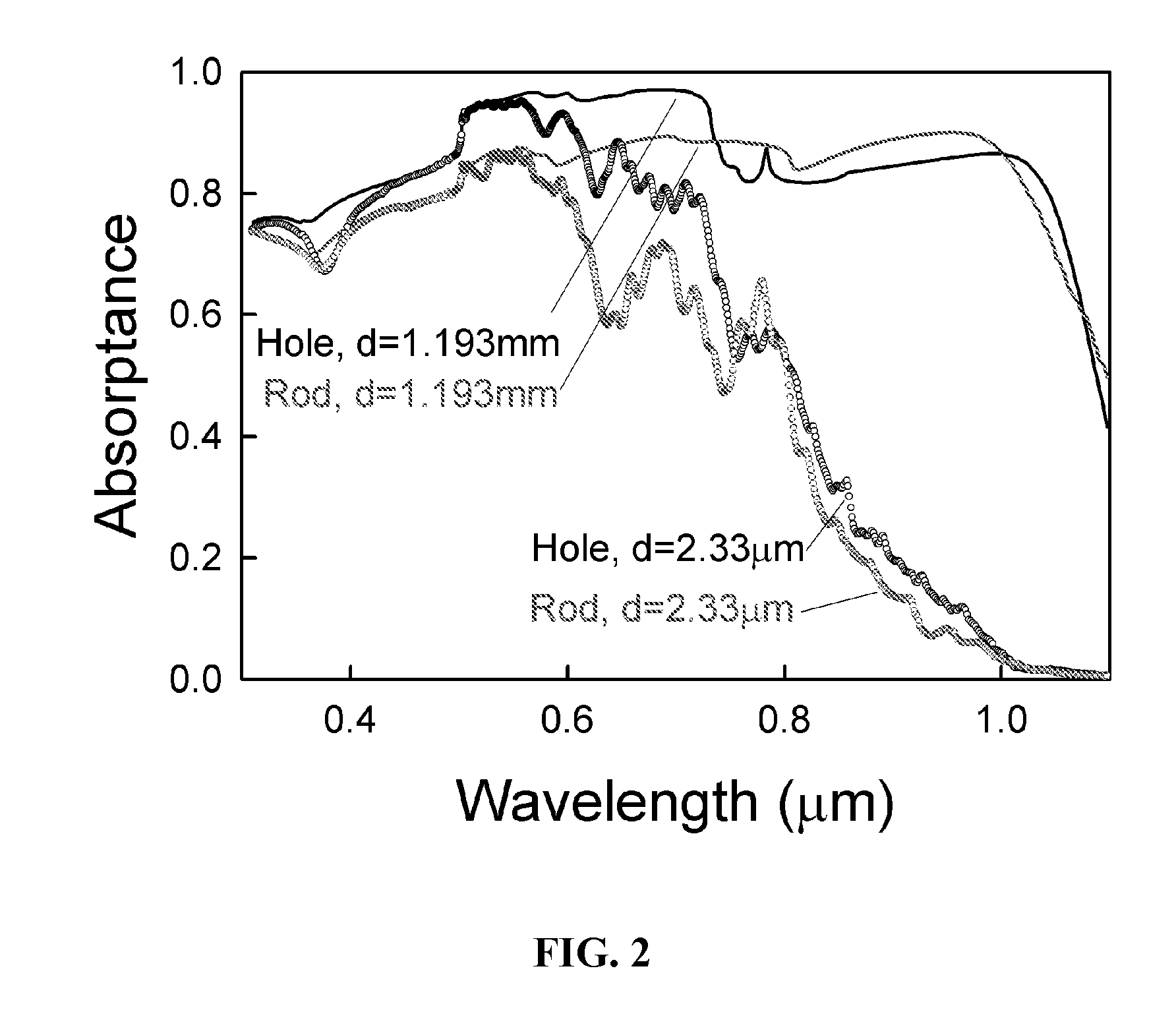Nanostructured arrays for radiation capture structures
a radiation capture and array technology, applied in the field of photon processing structures, can solve the problems of poor infrared absorption of crystalline silicon, use in solar photovoltaics, and difficulty in fabrication of these structures, and achieve the effect of improving at least one of photon capture and charge separation
- Summary
- Abstract
- Description
- Claims
- Application Information
AI Technical Summary
Benefits of technology
Problems solved by technology
Method used
Image
Examples
Embodiment Construction
[0037]To evaluate the absorption performance of solar cells, we calculate the ultimate efficiency, η, which is defined as the efficiency of a photovoltaic cell as the temperature approaches 0° K when each photon with energy greater than the band gap produces one electron-hole pair:
η=∫0λgI(λ)A(λ)λλgλ∫0∞I(λ)λ,(1)
[0038]where I is the solar intensity per wavelength interval, A the absorptance, λ the wavelength, and λg the wavelength corresponding to the band gap. For the solar intensity, we use the Air Mass 1.5 spectrum. Equation (1) shows that, for a given absorption and solar radiation spectrum, λ / λg can be regarded as a weighting factor for integration. As the wavelength decreases from the band gap, the contribution of the absorbed solar energy to the ultimate efficiency decreases because the excess energy of photons above the band gap is wasted. Thus, while the solar Air Mass 1.5 spectrum peaks around 500 nm, the largest contribution to the ultimate efficiency of a c-Si solar cell c...
PUM
 Login to View More
Login to View More Abstract
Description
Claims
Application Information
 Login to View More
Login to View More - R&D
- Intellectual Property
- Life Sciences
- Materials
- Tech Scout
- Unparalleled Data Quality
- Higher Quality Content
- 60% Fewer Hallucinations
Browse by: Latest US Patents, China's latest patents, Technical Efficacy Thesaurus, Application Domain, Technology Topic, Popular Technical Reports.
© 2025 PatSnap. All rights reserved.Legal|Privacy policy|Modern Slavery Act Transparency Statement|Sitemap|About US| Contact US: help@patsnap.com



